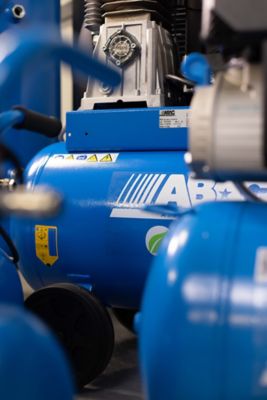A compressed air system is essential for a workshop because it provides a versatile, efficient, and cost-effective source of power for various tools and equipment. It enhances productivity, improves tool performance, and ensures a safer working environment.
When it comes to running a workshop, having a reliable and efficient air line system is crucial. A well-designed workshop air line can significantly enhance the functionality of your workspace, providing easy access to compressed air for various tasks.
Key Considerations When Planning a Workshop Air Line Pipe
Planning an air system layout involves several key considerations to ensure efficiency and functionality:
- Choosing the right compressor size
- Installing an appropriate air tank
- Designating different stations for specific tasks
- Incorporating quick-disconnect fittings
- Deciding between hard-line plumbing and a soft-line hose reel
Proper Drainage in Workshop Air Systems
Proper drainage is crucial for maintaining the efficiency and longevity of your workshop air system. Compressed air systems generate water as a byproduct, which can lead to corrosion and damage if not properly managed. Here are some tips for incorporating proper drainage:
- Install Drains at Low Points: Place drains at the lowest points in the system to allow water to collect and be easily removed.
- Use Automatic Drain Valves: Consider using automatic drain valves that open periodically to release accumulated water.
- Regular Maintenance: Perform regular maintenance checks to ensure that drains are functioning properly and that there are no blockages.
Benefits of Starting with a Hose Reel Setup
For private use and professional workshop applications – hard-wearing fabric hoses, flexible Super-Flex hoses or durable polyurethane hoses for every application. For optimal workplace organisation and ergonomic work – hose rewinders, power and air supply units and tractions.
Starting with a hose reel setup before transitioning to a hard-line air system offers several benefits:
- Flexibility: A hose reel setup provides flexibility for different applications, allowing you to move the hose to various locations as needed.
- Ease of Installation: Hose reels are relatively easy to install and can be a cost-effective solution for smaller workshops.
- Upgrade Potential: Starting with a hose reel setup allows you to gradually upgrade to a hard-line system as your needs and budget allow.
Socket System for Workshop Air Line
For small and medium-sized workshops: Lay pipelines quickly and easily with a few hand movements with the AIRnet pipe system, and extend or modify existing pipelines. The flexible plug-in system offers a wide selection of different connectors.
The Click-it plug connectors:
- The stainless steel retaining claw provides a force lock for retaining the pipe securely
- Oil-resistant O-ring for complete impermeability, even with oil-containing compressed air
- Spacer washer for centering the pipe in the fitting exactly
Common Questions
Key considerations when planning an air system layout include choosing the right compressor size, installing an air tank, designating stations for different tasks, incorporating quick-disconnect fittings, and deciding between hard-line plumbing and a soft-line hose reel.
Proper drainage can be achieved by:
- Installing drains at low points.
- Using automatic drain valves.
- Performing regular maintenance checks to ensure drains are functioning properly and free of blockages.
Starting with a hose reel setup offers flexibility, ease of installation, and the potential for gradual upgrades. It allows you to move the hose to various locations as needed and can be a cost-effective solution for smaller workshops.
Reach Out to Us for Expert Advice
For more information on compressed air dryers and to find the right solution for your application, consult with a compressed air expert. At ABAC, we offer a wide range of air dryers and equipment related to compressed air systems, and our experts are here to help you make the best choice for your needs.











